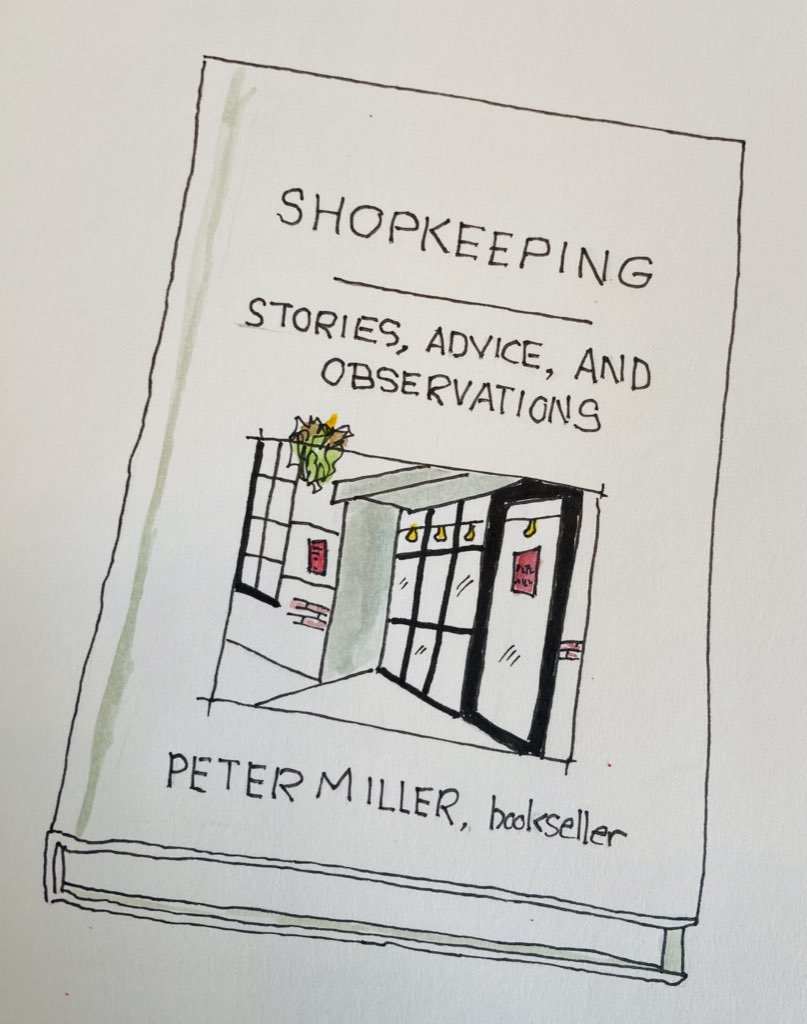One Thing is an email newsletter subtitled “Good things, real things, interesting things”, and it generally delivers on the promise.
In the recent Boutique Dreams, the book Shopkeeping, by Seattle bookseller Peter Miller is the focus:
Peter Miller might be the cultural embodiment of if you know, you know, and I have to admit, I did not know. He is the owner of Peter Miller Books, an architectural bookstore and purveyor of quality objects in Seattle that has survived for more than 40 years. I’ve never been there, but I feel like I have, because I read Miller’s new slim volume Shopkeeping: Stories, Advice, and Observations, which is a manual slash memoir that contains his philosophy of retail. You know I love a slim volume, and this is a beautiful one. Bound in thick, gray linen paper, with a sketch of the storefront on the cover, the book is an objet in itself. Over its scant 136 pages, in airy, straightforward paragraphs, Miller makes the case that shopkeeping is a kind of meditative art form, a holistic practice that requires not just enlightened taste but intense discipline, thinking about everything all the time.
Of course I ran to The Bookmark and bought myself a copy immediately. It is indeed a delightful book, a paean to the sort of shop I love dearly, the sort of shop that is increasingly rare.
Many years ago there was a Grabbajabba coffee shop on Kent Street in Downtown Charlottetown (it eventually became a Timothy’s, and moved around the corner to Great George Street, where it remains). My friend Eugene Sauve was a partner in the enterprise, and I recall a conversation once where he relayed to me a chat he’d had with Chen, owner of the late great Formosa Tea House. Chen led Eugene out to the sidewalk and told him about the importance of the “face” of the shop, the way that it presented itself to the street.
I thought of conversation when I read Miller’s word’s about the how a shop exists in the urban context:
As a shopkeeper, you have a quiet, unspoken responsibility to your literal section of the street. You keep quiet track of it and help, however you can.
I find it remarkable that I encounter many shops who, after having invested all manner of time, energy, and money in creating a small business, seem unable to inhabit the business from the perspective of a customer or neighbour. And yet, as Chen told Eugene, and as Miller writes, it is your face, and among the most important things you can nurture.
Miller again:
A good shop takes its direction from the existing space—where is the natural light, how does it change, what will it affect? You may decide to block the view to the street, to create privacy and enclosure and give yourself a true stage for a shop window. That is the typical department store solution.
Or you may want to leave the window as a visual access into the store, declaring yourself in a most open and clear way. There are advantages to both solutions, but there are consequences as well.
You must go outside your shop and look at it-in every season and at many different times of the day. It is literally how you look and how you are perceived.
Shopkeeping is a book any shopkeeper would do well to read and inhabit.

 I am
I am
Add new comment